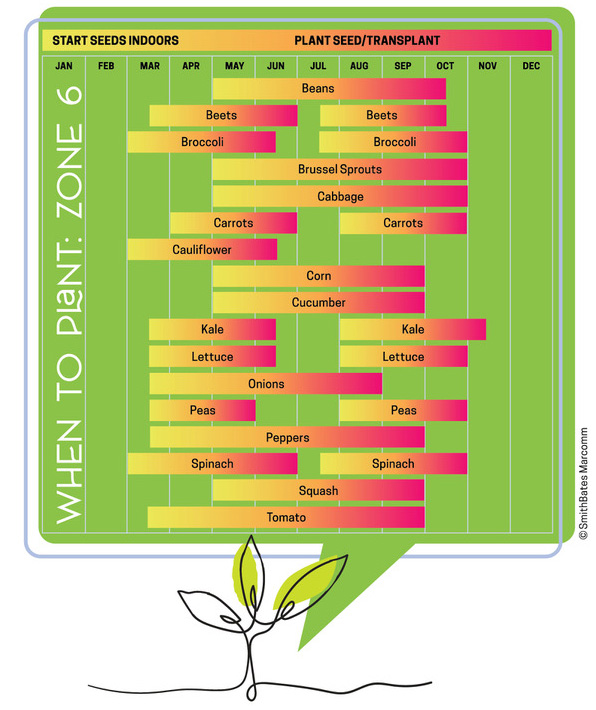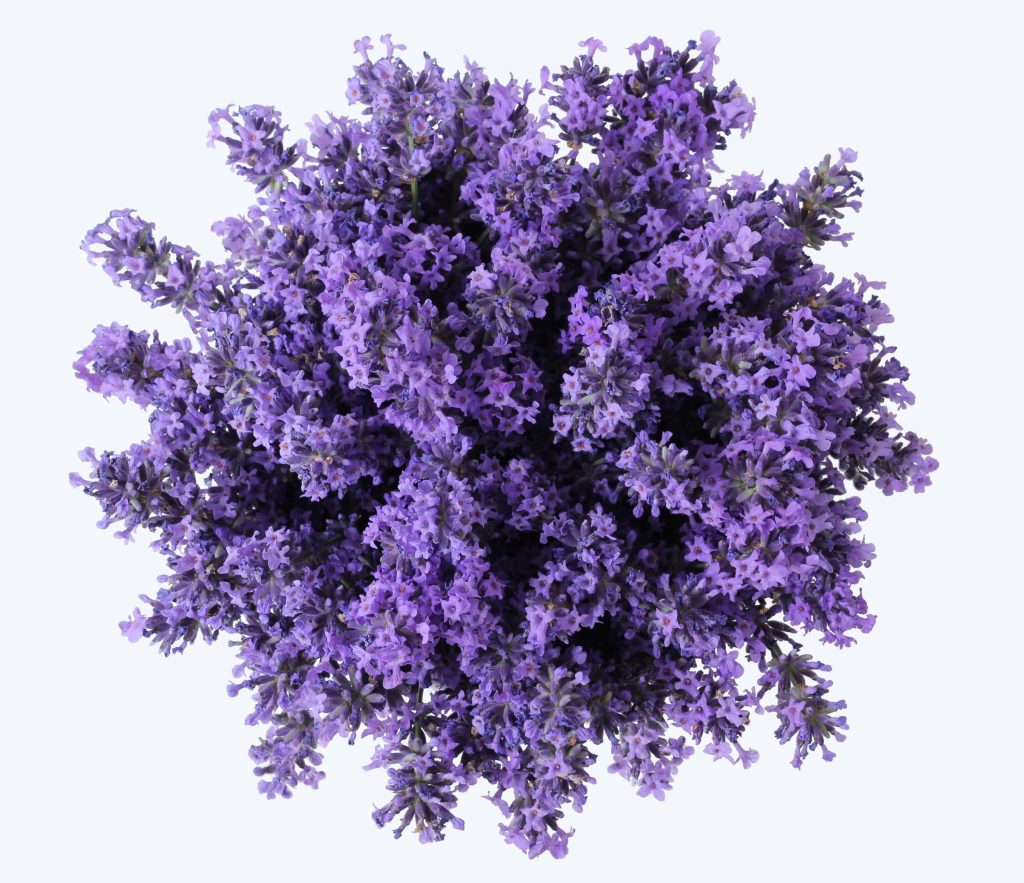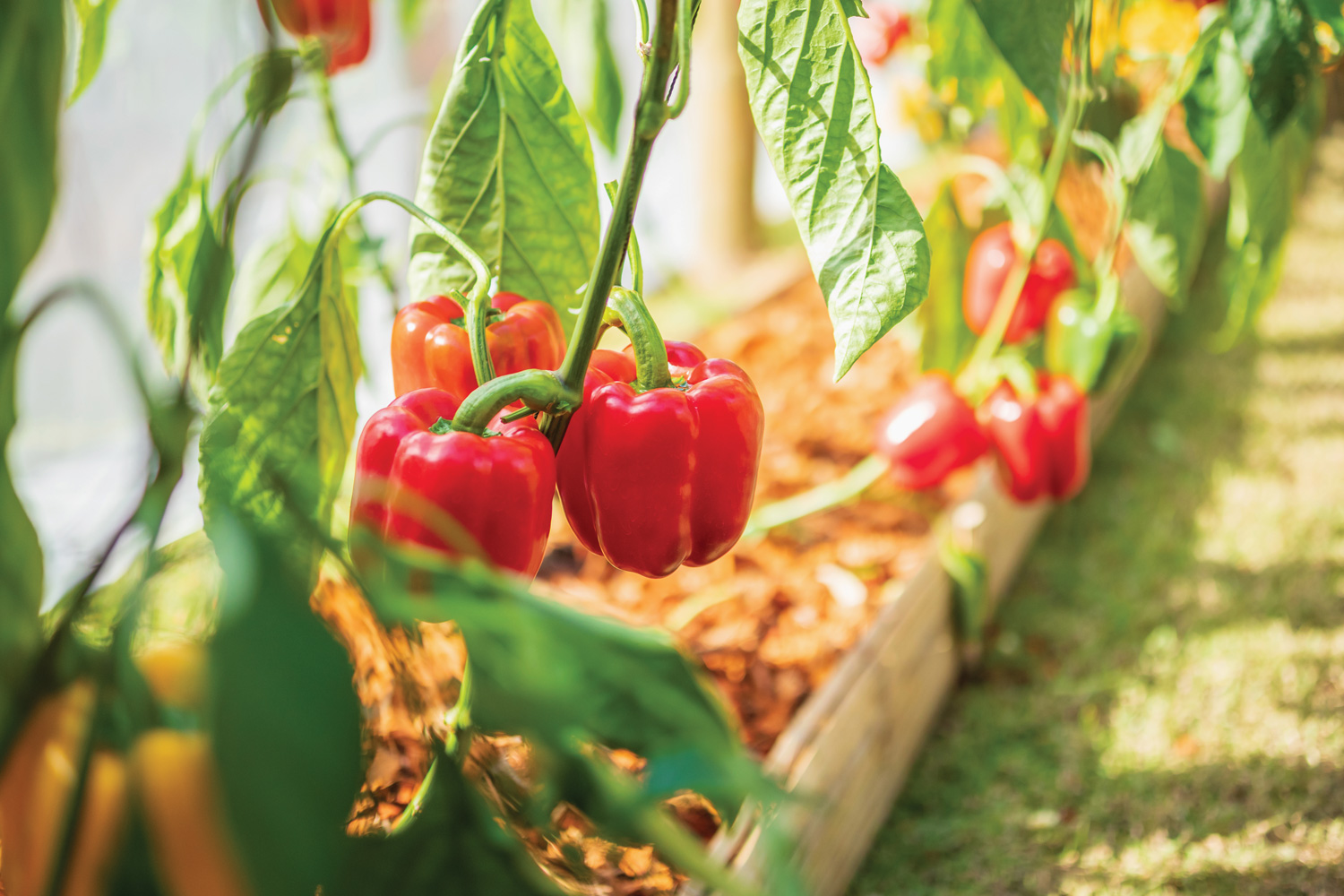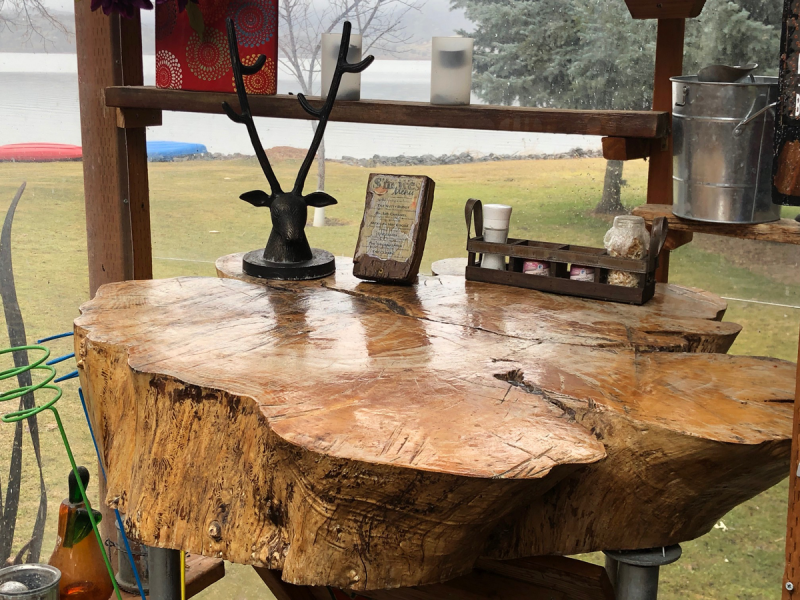If you’ve lived here long enough, you know how capricious the Spring weather in Klamath can be. Sometimes, March has been warm enough to wear shorts, whereas other years, the snow is blowing sideways while you sit in the stands at your child’s track meet, wrapped inside a toasty sleeping bag, feeling sorry for all the kids competing in the event. Those drastic temperature swings can make the planting outline difficult to follow.
When to plant: According to the USDA, the
growing or planting zone for the Klamath Basin is rated a level 6. Knowing the area’s climate is important because it narrows down the options of what can, and cannot grow by measuring the lowest frost temperatures that a particular plant can survive. For zone 6, the planting target dates are from March 30th to April 30th. Although the suggested time-frame is a collage of estimated averages, planting early has its pros and cons. The pros: The chilly temperatures and heavy moisture in the soil means fewer diseases pests and insects will be hanging around, so it gives plants a heartier start. The cons: Be prepared for that unexpected frost. Have old newspapers, split milk containers, old bedsheets, plastic wrap, or frost blankets ready to cover those plants in case a “Klamath cold-snap” blows through —and we all know it will. Just remember to remove them the next morning.

Sun or shade: On average, plants need around 6 hours of sunlight, so get to know your yard. Mark the areas that receive the most sun and those that do not. A trick that may help: Place solar-powered lights around your yard. Then, at night, the lights illuminating the brightest are the areas that receive the most sun. Once you know your yard’s sun-specs, you can move onto what to plant and where to plant them. A simple beginner’s rule to remember is: If you grow it for the fruit or the root, you’ll need full sun. If you grow it for the leaves, partial shade is all you need. Of course, there are exceptions to this semi-rhyming rule, but the suggestion is a good starting point.
If your yard is mostly shaded, don’t worry, we have a tip for that too: Moveable beds. Yes, that’s right, a garden on wheels. To help plants absorb more UV rays, you can do the sun-dance-shuffle throughout the day by stationing your garden in the sunniest spots. And on those nights when Winter hasn’t received the “Get-lost-its-Spring,” memo, our plants can be rolled into the garage or a shed for protection. Those who have ample space for a garden, investing in permanent raised beds, is a wise choice because they can be reused every year for simple planting.

Soil: Because plants are not inert, but living objects that need nourishment, building a nutrient-rich environment is an essential step toward a sustainable garden. We must feed our plants the same as we feed our beloved four-legged friends. With that in mind, a good recipe to follow is 50% garden soil, 25% aged manure, and 25% compost or humus. A mixture we could create ourselves by recycling old leaves, grass clipping, cardboard, straw, eggshells, banana peels, apple cores, and coffee ground. However, if garbage-saving ranks low on your list of to-dos, nutrient-rich compost can be easily purchased in premixed bags at any one of our friendly, knowledgeable, hometown nurseries, or local garden centers.
Traditional sprinklers work great for watering, but have you ever tried Deep Root Irrigation and or a Drip System? By implementing an underground system, only a fourth of the regular water supply is needed because zero liquid is lost to evaporation. And….when puddles are blocked from forming, it prevents most weeds from growing on the surface. A win for water conservation and win for our sore, weed-pulling backs. Thank you very much!
Now that we know our target dates, the balance between sun or shade, and a few tips on healthy soil, what plants should go in the ground first?

Psst! Want to know a secret?
Plant lavender, peppermint, citronella, rosemary, garlic, lemongrass, and basil in your yard. Deer and most insects detest those scents, so it’s a wonderful way to add natural pest repellents. Wait! (Did I mention mosquitoes HATE them?) You’re welcome!
Written by Beverley Miles







